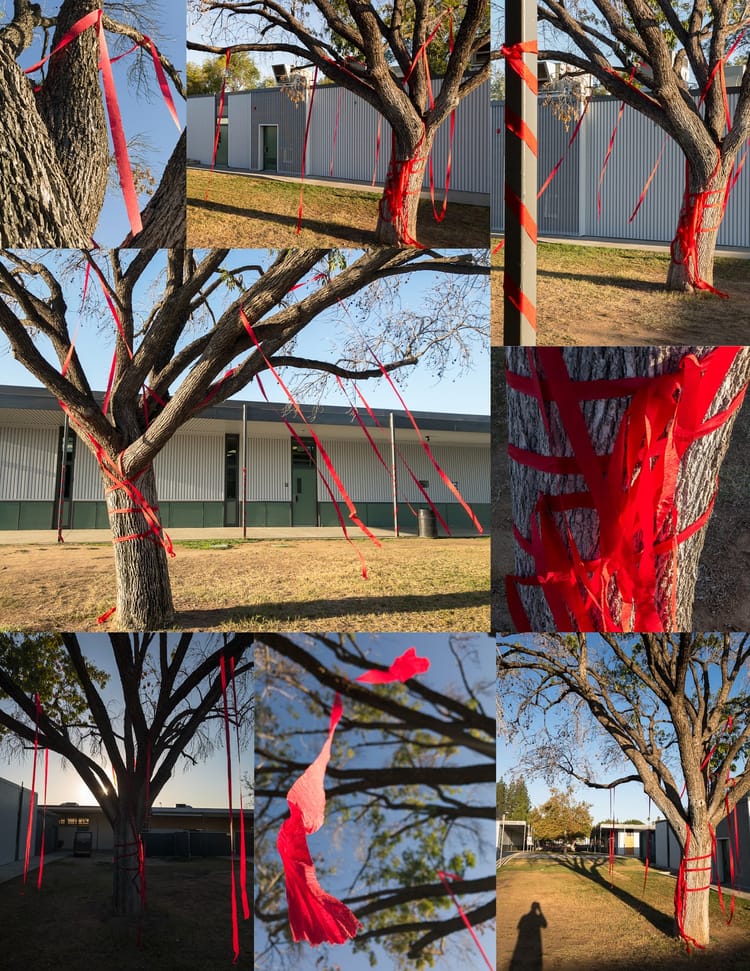Reflections and Ripples: Capture the Beauty of Puddles
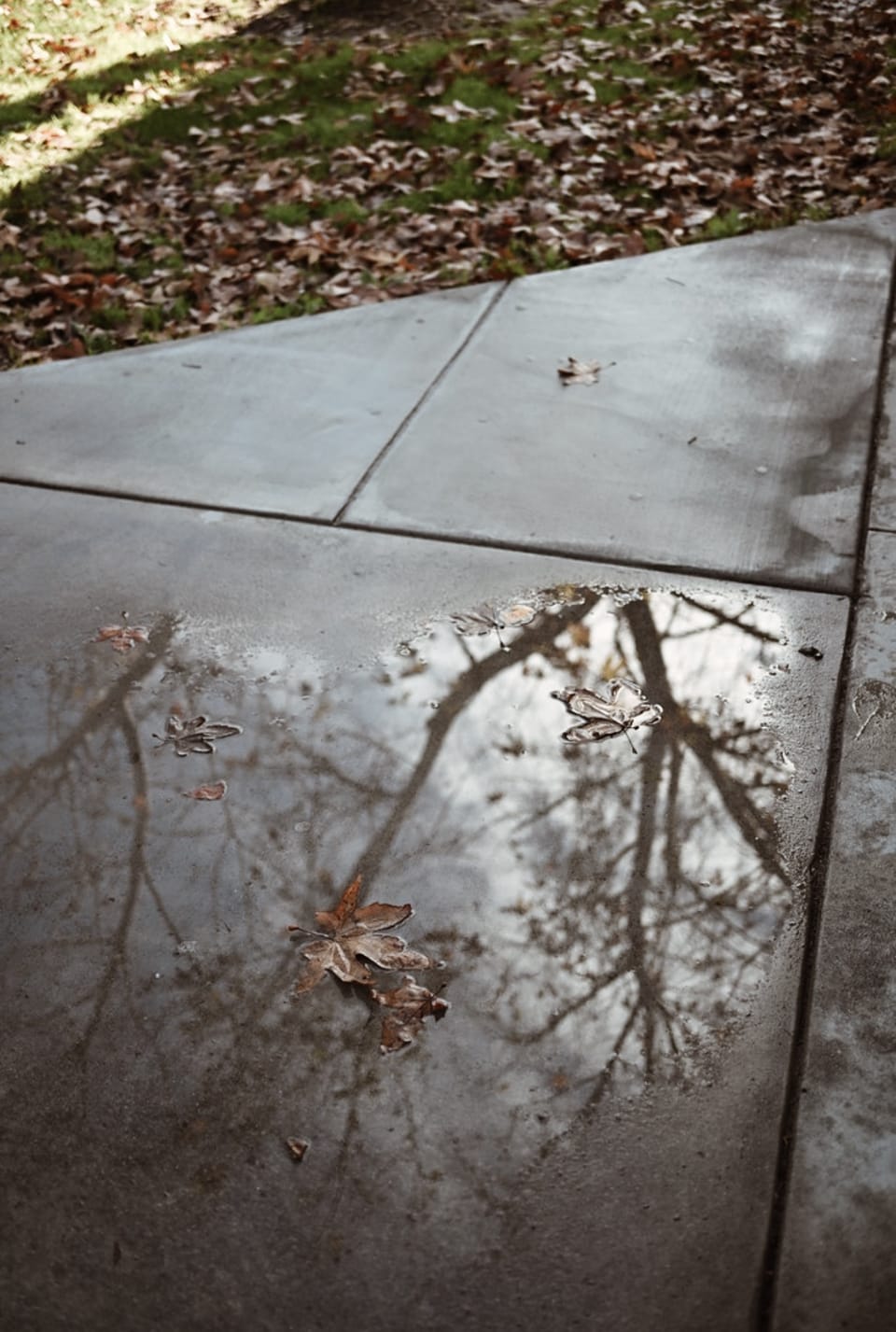
If you would like to have your photo showcased on this website for this challenge, submit your work in our Flickr group: https://flickr.com/groups/mrcamera
Introduction:
Welcome to our latest photo lesson or challenge, where we invite you to explore the world of puddle photography. This unique and often overlooked subject can yield surprising and captivating results when approached with creativity and the right techniques. So grab your camera and let's dive into the world of puddles!
Understanding Puddle Photography:
These mostly overlooked temporary bodies of water offer a unique perspective, transforming everyday scenes into mesmerizing abstracts or revealing hidden details.
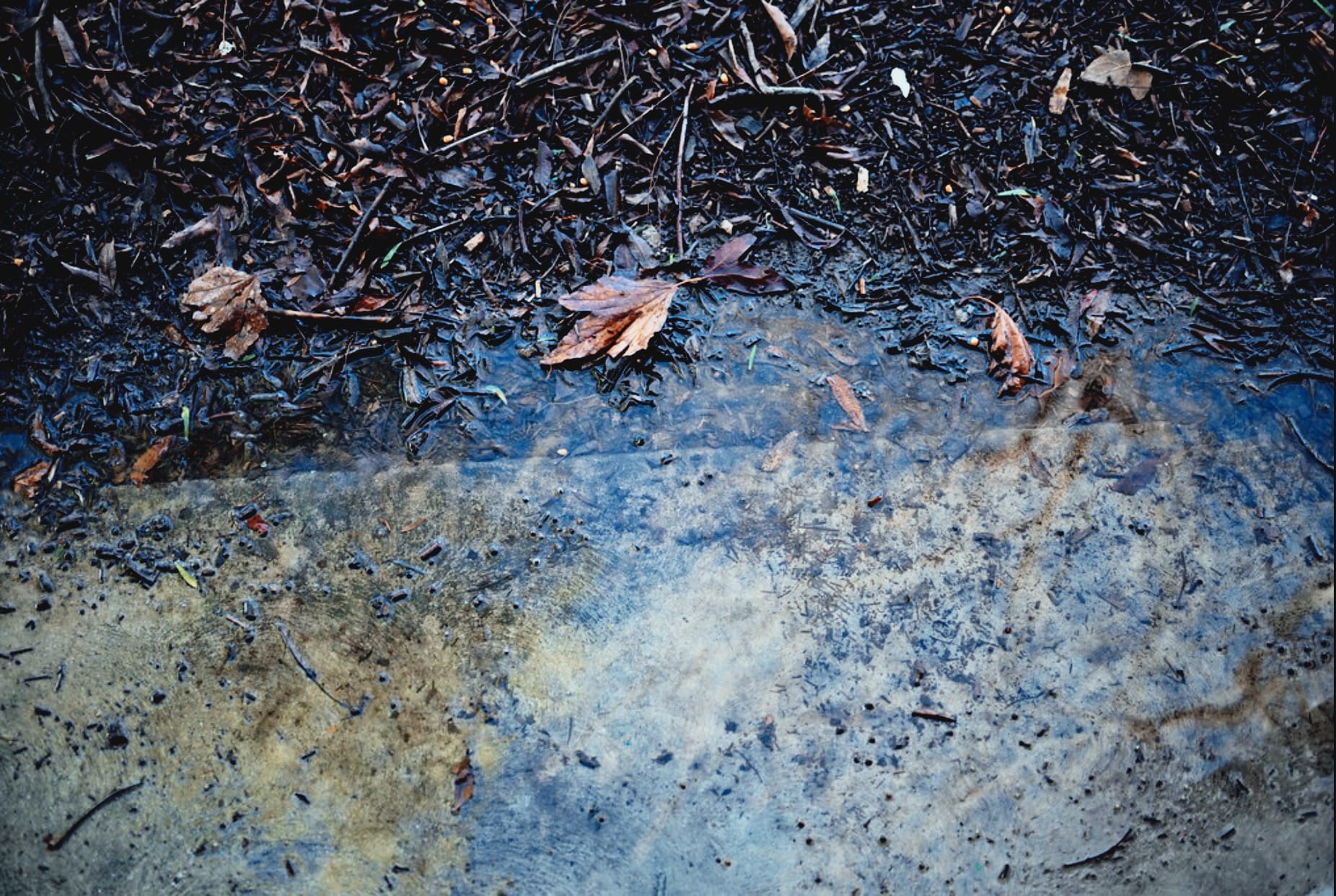
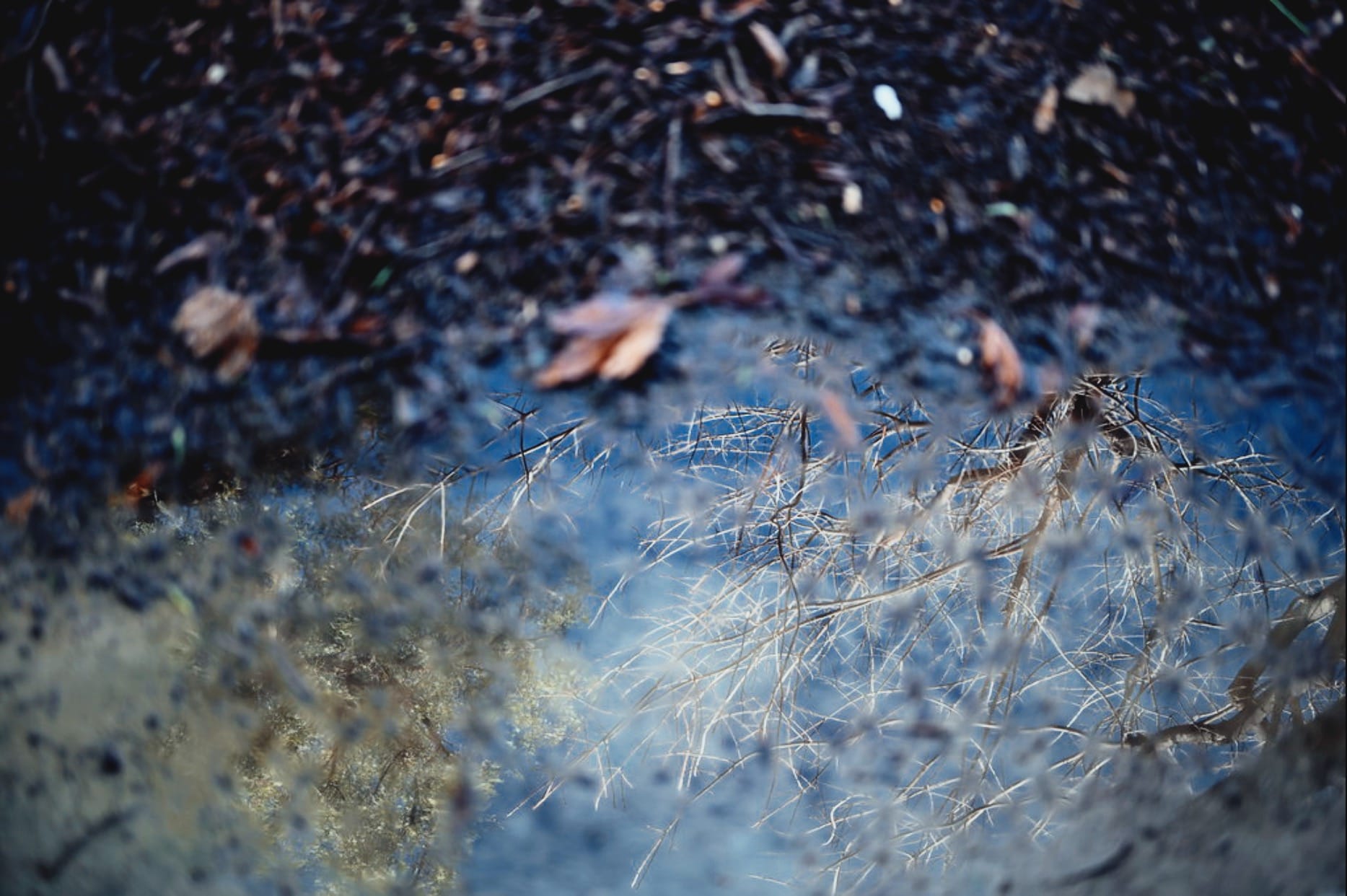
Getting Started:
- Choose the right location: Look for puddles in interesting environments, such as urban cityscapes, parks, or natural landscapes. Keep an eye out for leading lines, patterns, and textures that can enhance your composition.
- Time your shoot: The best time for puddle photography is typically after rainfall, when puddles are most abundant. However, you can also create your puddles by carefully pouring water in strategic locations.
- Gear up: A wide-angle lens is ideal for puddle photography, as it allows you to capture a larger portion of the reflection. A sturdy tripod and polarizing filter can also be beneficial for stabilizing your shots and reducing glare.
Techniques for Capturing Stunning Puddle Photos:
- Focus on the reflection: Ensure your camera is level with the puddle's surface to capture a clear reflection. Experiment with different focal lengths and apertures to achieve the desired depth of field.
- Look for leading lines and patterns: Utilize leading lines and patterns within the puddle or its surroundings to guide the viewer's eye through the image.
- Capture abstracts: Explore abstract compositions by focusing on color, shape, and form within the puddle. Look for interesting reflections and patterns that deviate from the traditional representation of the scene.
- Include contextual elements: Balance abstract compositions with contextual elements, such as people, animals, or objects, to provide a sense of scale and narrative.
- Play with perspective: Experiment with different viewpoints, such as crouching, lying down, or even looking down from above, to discover unique and engaging compositions.
- If you have the ability to change the focus on your camera/lens set-up, you can focus on the puddle in one shot, and then in another shot with the same composition not moving the frame, try focusing on the actual reflection that is in the puddle. My examples have this technique. It works best with shallow depth of field apertures such as f/2 and bigger openings on the aperature.
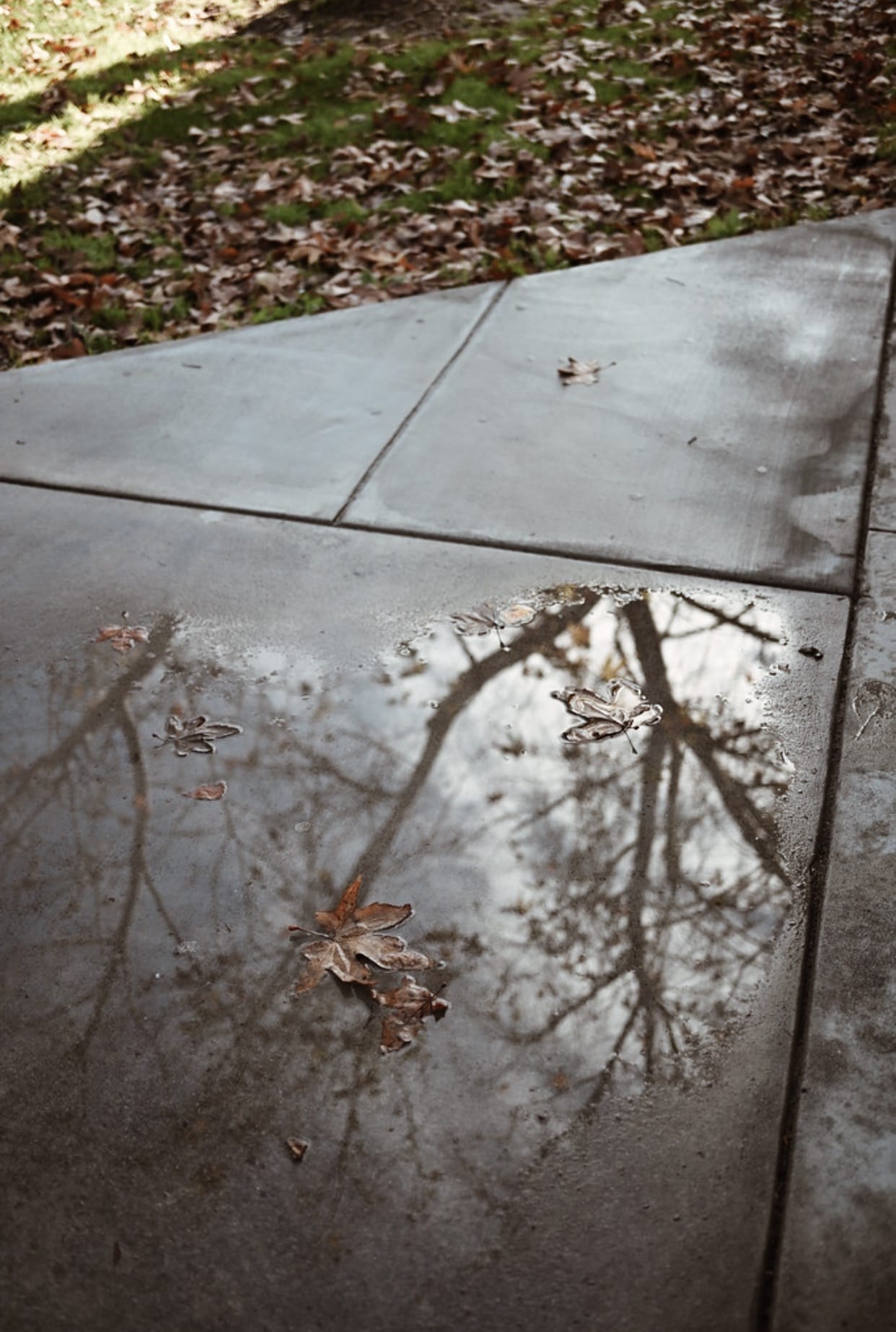
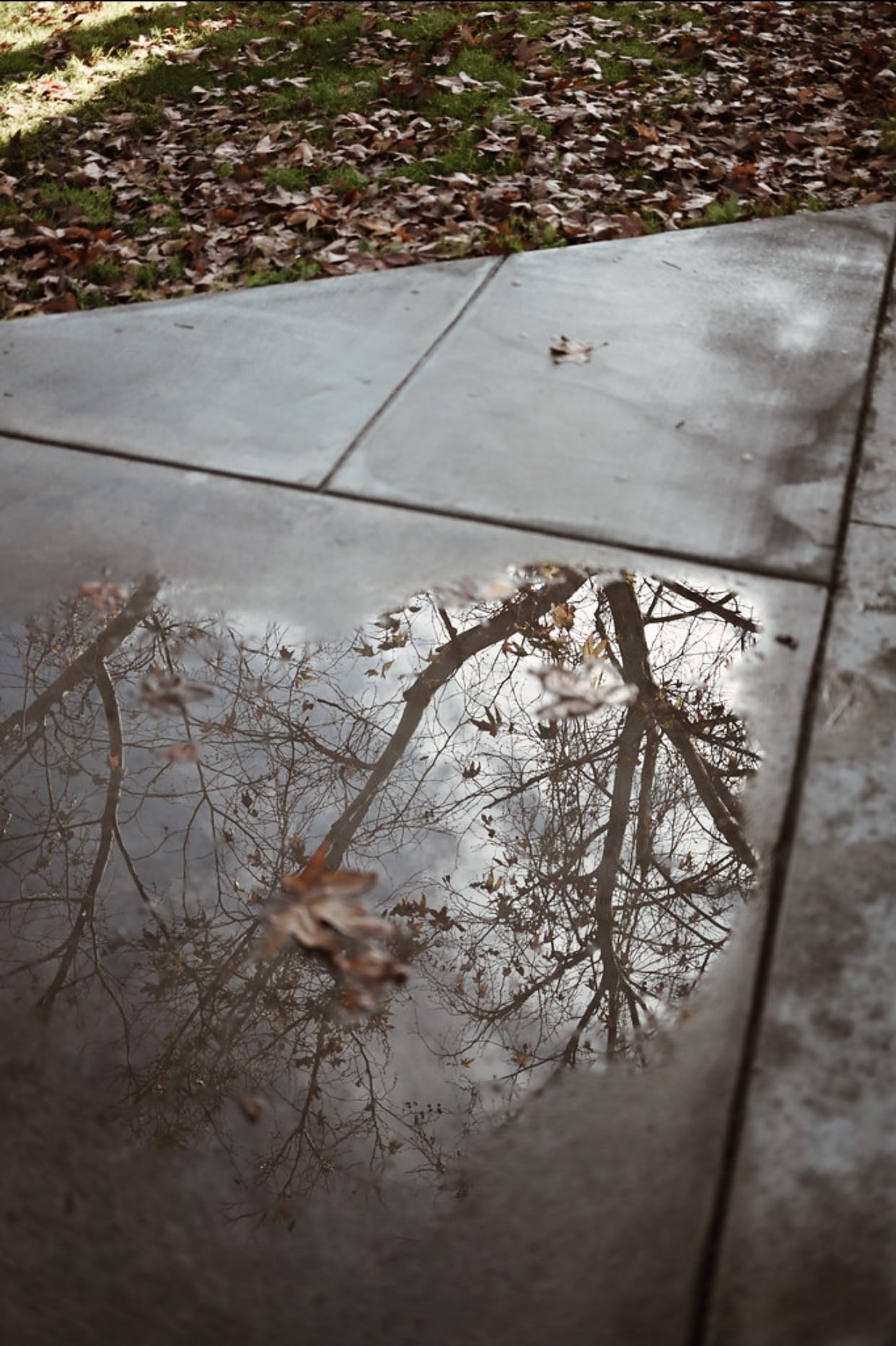
Post-Processing Tips:
- Adjust contrast and saturation: Enhance the colors and contrast in your puddle photos to emphasize reflections and patterns.
- Crop for composition: Crop your images to remove distractions and improve the overall composition.
- Sharpen and reduce noise: Sharpen your images and reduce noise to improve clarity and detail.
Conclusion:
Puddle photography offers a unique and engaging way to explore the world of photography. By experimenting with different techniques and embracing your creativity, you can create stunning, captivating images that reveal the beauty hidden within something as simple as a puddle. So, grab your camera and join us in this photo lesson or challenge, and share your puddle photography results with our community! Happy shooting!
